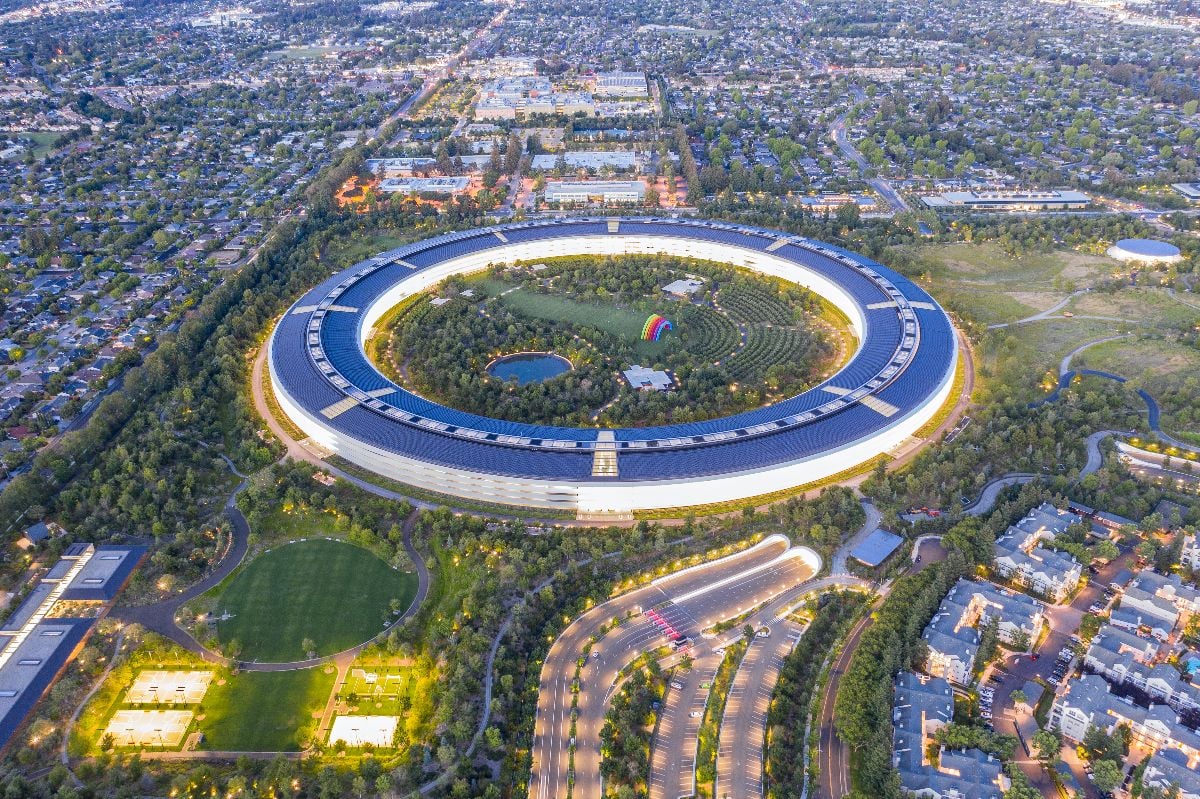
You can roll your eyes at California—and plenty of people do—but you can’t ignore the state’s habit of cranking out ideas that rearrange daily life. From the garages of Palo Alto to the soundstages of Hollywood, it has been a proving ground where restless tinkering and oversized ambition collide.
The pattern is almost boring in its consistency: a couple of dreamers build something odd, it scales into an industry, and the world adapts around it. Microchips, movies, surf gear, social media—each started as a local experiment and ended up rewriting global culture.
The 25 examples that follow aren’t just clever inventions. They’re proof that California doesn’t simply make products; it manufactures paradigms, exporting new ways of living with the same regularity other places export grain or oil.
25. Audio Oscillator — The Garage Gadget That Started It All

In 1939, two Stanford grads named Bill Hewlett and Dave Packard built an audio oscillator in a rented Palo Alto garage. It wasn’t glamorous — just a test instrument that generated steady tones — but it became the HP 200A, the first product of what would become Hewlett-Packard. Walt Disney bought eight for Fantasia, and the Silicon Valley garage myth was born.
The oscillator itself didn’t change everyday life, but the way it was built did. It proved that world-class technology could come from a couple of tinkerers with an idea and a bench, not just government labs or corporate R&D.
That garage culture — small, improvised, restless — became California’s template for innovation. From audio oscillators to smartphones, the story kept repeating: start in a garage, scale to the world.
24. Shockley and the Transistor’s Move West — How Silicon Valley Got Its Mojo
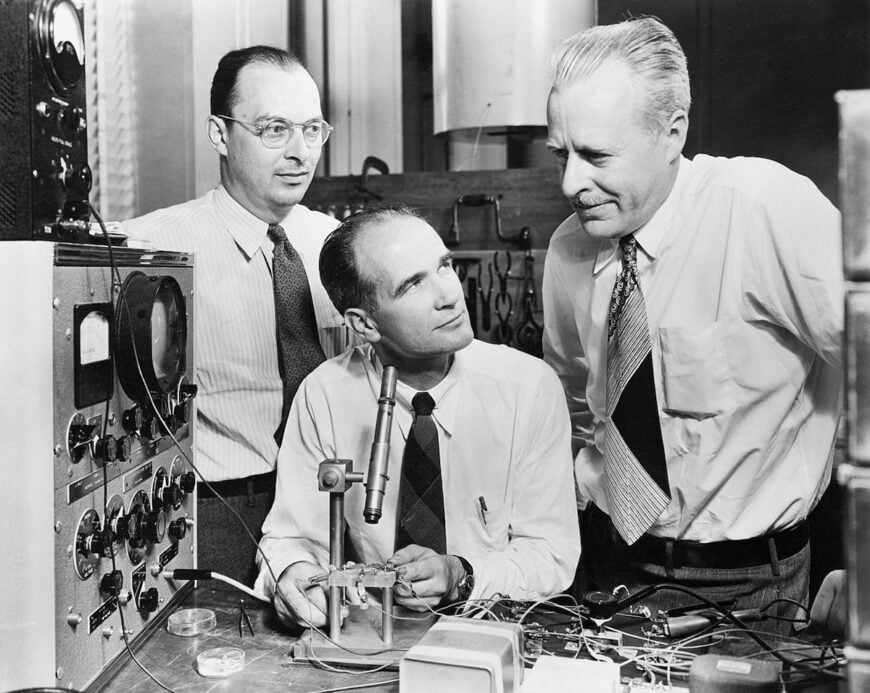
The transistor was invented at Bell Labs in New Jersey, but Silicon Valley got its name because William Shockley — one of its inventors — set up shop in Mountain View in 1956. Shockley Semiconductor was a short-lived disaster as a company, but it seeded the Valley with talent.
The “Traitorous Eight” who quit Shockley’s lab went on to found Fairchild Semiconductor, which in turn spun off Intel, AMD, and a whole web of chipmakers. California didn’t just import the transistor — it turned it into an industry.
That migration west is why Silicon Valley exists. Without Shockley and his fractious team, the chip revolution might have stayed on the East Coast. Instead, the Valley became the epicenter of the semiconductor age.
23. Laser — A Beam of Light That Reshaped Everything

In 1960, Theodore Maiman at Hughes Research Labs in Malibu fired up the world’s first working laser. The technology was so strange at the time it was called “a solution looking for a problem.” The problems quickly revealed themselves.
From supermarket scanners to fiber-optic cables, from eye surgery to barcode readers, the laser became indispensable. California didn’t just birth Hollywood fantasy; it birthed the beam that made digital communication and precision medicine possible.
The laser is a California archetype: radical, improbable, and instantly transformative once unleashed. What began as an experiment in a Malibu lab ended up reshaping everything from medicine to entertainment.
22. Integrated Circuit — The Chip That Shrunk the World

In 1958, Jack Kilby at Texas Instruments in Dallas built the first working integrated circuit, but it was Robert Noyce at Fairchild Semiconductor in Mountain View who solved the real problem: how to make it practical to manufacture at scale. Noyce’s version used silicon and planar processes, setting the stage for Silicon Valley’s entire identity.
Without that innovation, computers would have remained expensive, room-sized machines reserved for corporations and government labs. Noyce’s chip shrank the components and made them reliable enough to fit into pocket calculators, radios, and eventually every consumer electronic device that followed.
California didn’t just inherit this technology—it became the epicenter of it. The Valley’s reputation as the birthplace of modern electronics rests squarely on the fact that one of its own figured out how to put multiple components onto a single piece of silicon and sell it to the world.
21. Semiconductor Manufacturing Equipment — The Machines Behind the Machines

Chips don’t make themselves, and California companies like Applied Materials and Lam Research figured out how to mass-produce them with breathtaking precision. Their equipment etched and layered silicon wafers into the microchips that power the modern world.
Without this machinery, the integrated circuit and microprocessor would have stayed lab curiosities. The ability to manufacture at scale made them cheap enough to embed in cars, toys, and phones.
California’s quiet dominance in chip-making equipment is the infrastructure behind the entire tech industry. It’s not glamorous, but it’s the bedrock that let Silicon Valley rule the digital age.
20. Microprocessor — The Brain Inside Modern Life
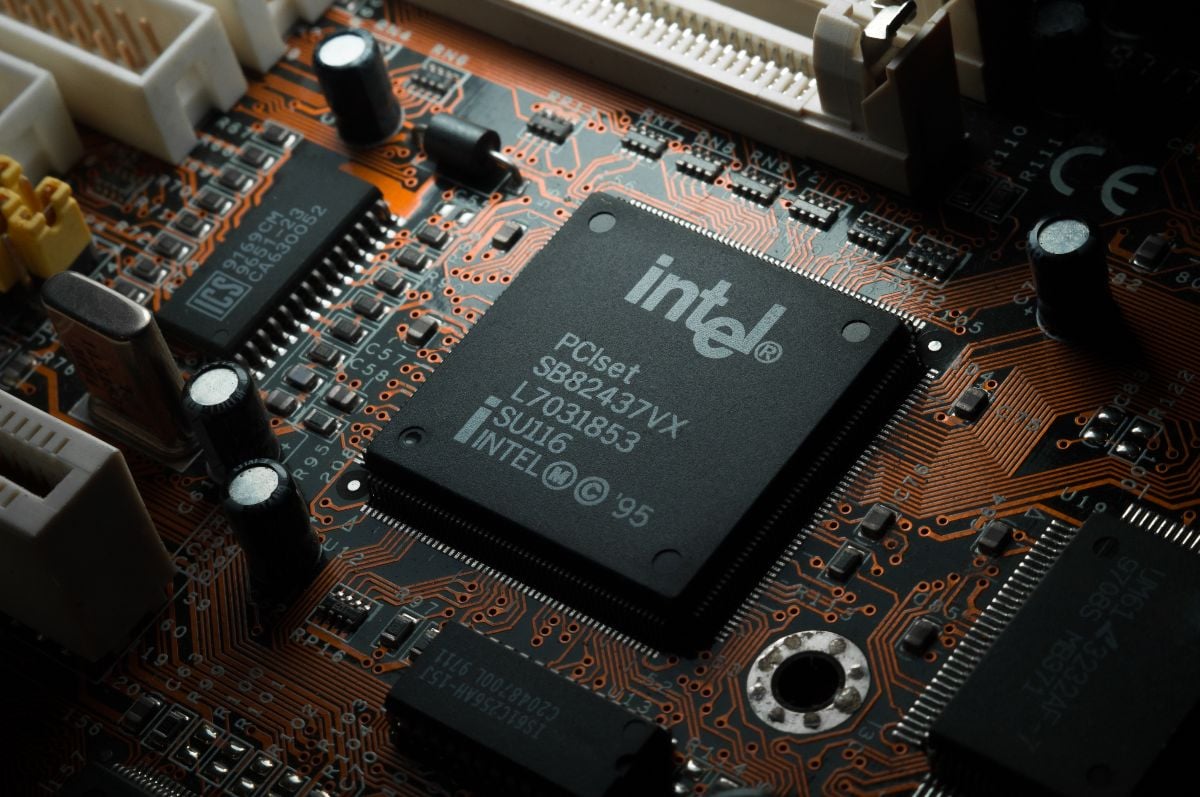
Intel, based in Santa Clara, invented the microprocessor in 1971 with the 4004 chip. This wasn’t just a faster computer component—it was the brain that would eventually power everything from calculators to spacecraft.
The microprocessor made it possible to put computing power into anything. Cars, appliances, toys, medical devices, industrial equipment—everything became “smart” because California engineers figured out how to make computers small and cheap enough to embed anywhere.
Without microprocessors, there’s no digital revolution. No personal computers, no Internet, no smartphones, no modern life as we know it. California didn’t just invent a component—they invented the foundation of technological civilization.
19. Digital Imaging — Silicon Eyes for a Visual Age

In 1969, researchers at Fairchild Semiconductor in Silicon Valley developed the first commercial charge-coupled device, or CCD. It turned light into digital signals, making electronic imaging possible.
From space telescopes to camcorders, and eventually to the camera in every smartphone, the CCD revolutionized how humans capture and share the world. California didn’t just give us computers; it gave us the eyes that feed them.
Digital imaging is the quiet revolution behind modern culture. Every selfie, livestream, and video call traces back to the Valley engineers who figured out how to trap light on silicon.
18. Homebrew Computer Club — Folding Chairs, Big Revolutions

In 1975, a ragtag group of hobbyists started meeting at the Stanford Linear Accelerator Center to swap circuit boards and show off their homemade machines. They called it the Homebrew Computer Club. Out of those folding-chair gatherings came Apple, Microsoft’s first West Coast push, and the personal computing movement itself.
Jobs and Wozniak demoed the Apple I there, while dozens of others shared code, schematics, and ideas. The Club was less a company than a cultural shift: computing was no longer the domain of corporations, but something you could tinker with at home.
That spirit of open exchange and DIY engineering still animates California’s tech scene. Hackerspaces, meetups, and demo days all trace their DNA back to a handful of enthusiasts who believed computers belonged to everyone.
17. Personal Computer — From Hobbyist Toy to Household Staple
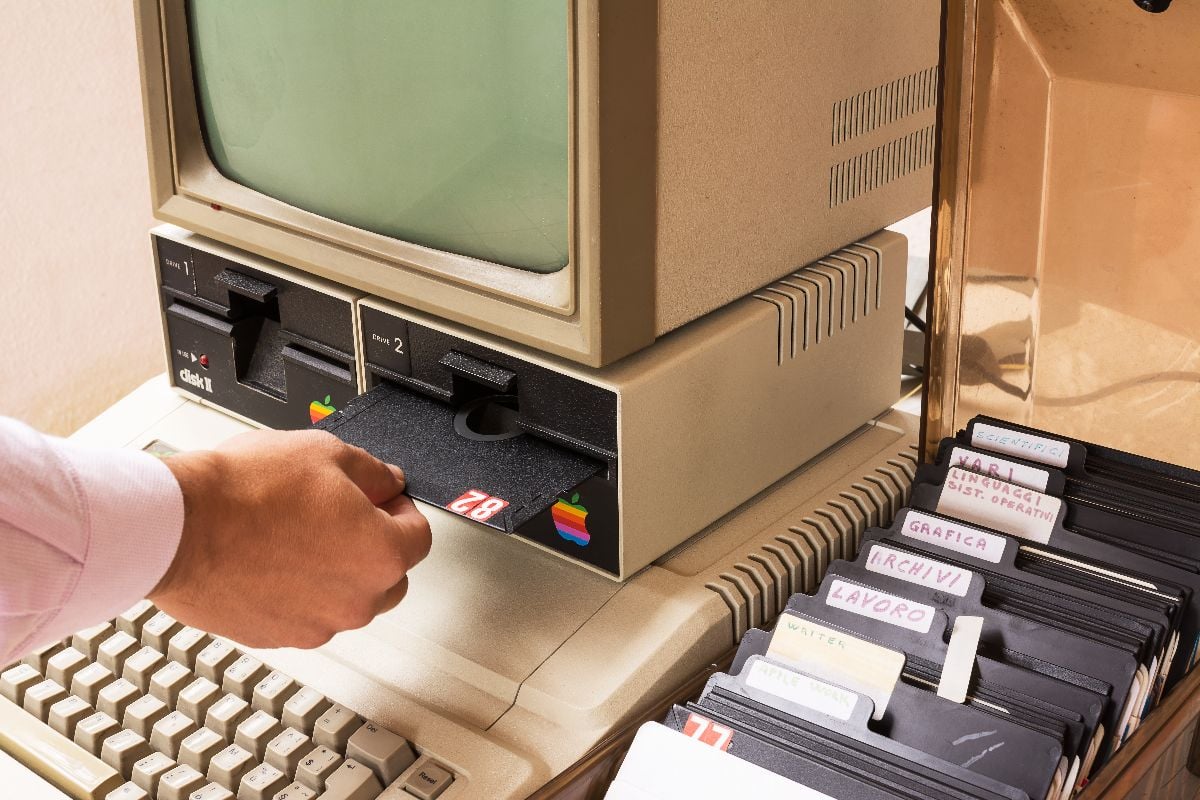
While other companies were building room-sized computers for corporations, Apple Computer in Cupertino decided regular people might want computers too. The Apple II, released in 1977, made personal computing accessible to anyone willing to spend about $1,300.
This wasn’t just about making computers smaller—it was about democratizing computing power. Before the Apple II, computers were tools for experts and institutions. After it, teenagers were learning to program in their bedrooms.
Personal computers didn’t just change business—they changed how humans think about information, creativity, and problem-solving. Every spreadsheet, every document, every digital photo exists because California companies decided computing belonged in homes, not just offices.
16. Internet — A Crash at UCLA That Connected the World
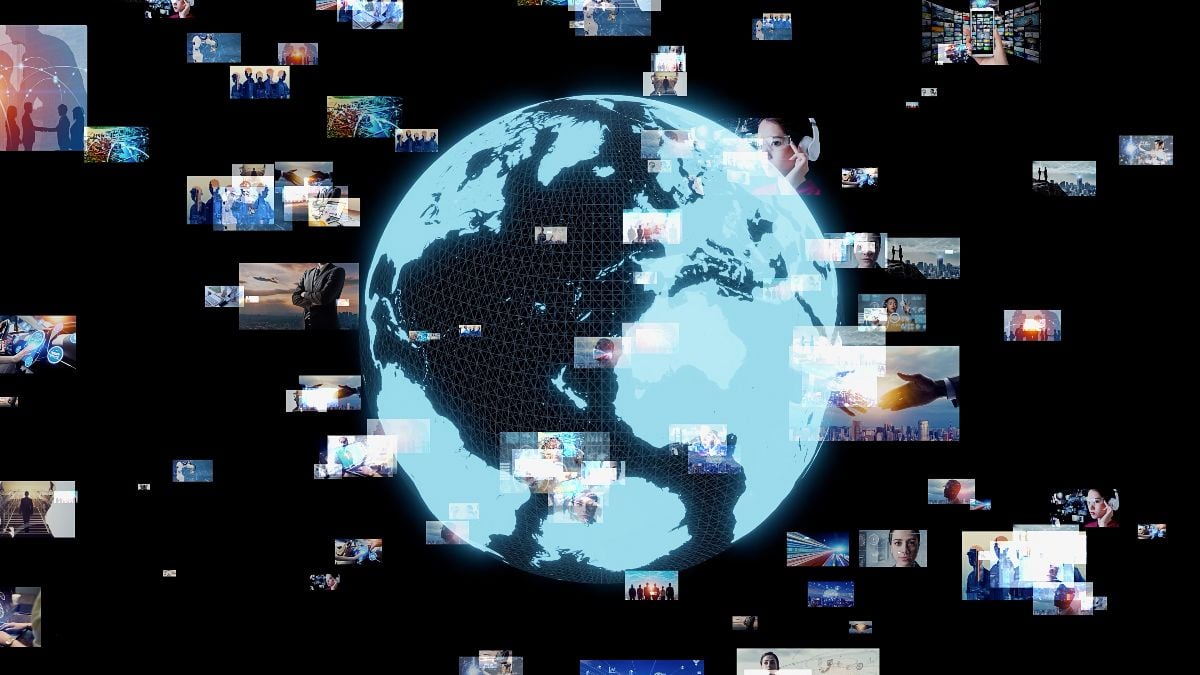
Forget Al Gore. The Internet was born at UCLA in 1969 when the first ARPANET message was sent between UCLA and Stanford. The message was supposed to be “LOGIN” but the system crashed after “LO.” Even California’s first Internet message was dramatic and incomplete.
This wasn’t just a technical achievement—it was the foundation for everything you’re doing right now. Reading this article, checking your phone, working from home, ordering everything online—none of it happens without those UCLA researchers figuring out how to make computers talk to each other.
The Internet didn’t just change communication; it obliterated the entire concept of distance and created the global economy we now take for granted. Not bad for a project that started as a way for universities to share computer resources.
15. Search Engines — From AltaVista to Google, Maps for the Web

By the mid-1990s, the Internet was exploding — and nearly impossible to navigate. Early engines like AltaVista offered a glimpse of order, but it was Stanford spin-offs that defined the era: Yahoo! in 1994 and Google in 1998. California turned the web from chaos into something you could actually use.
Google’s PageRank algorithm didn’t just deliver results — it reshaped human knowledge. Suddenly, finding information anywhere on earth was as easy as typing a few words. That’s not convenience; that’s civilization-level infrastructure.
Search engines didn’t just catalog the web, they reordered it. Whole industries rose and fell on California’s algorithms, and human curiosity acquired a permanent, digital memory.
14. Social Media — From Dorm Rooms to Democracy

Facebook, Twitter, Instagram, Snapchat, TikTok—California companies didn’t just create social media platforms, they rewired human social interaction. These weren’t just websites; they were behavioral modification systems that changed how people communicate, consume information, and see themselves.
Social media started as a way for college students to connect online and evolved into the primary news source for billions of people. California companies created platforms that became more influential than traditional media, governments, and educational institutions.
These platforms didn’t just change communication—they changed democracy, commerce, and social movements. From the Arab Spring to online shopping to political campaigns, nothing happens anymore without social media amplification.
13. Salesforce — Turning Software Into a Service

In 1999, a San Francisco startup called Salesforce had a radical idea: deliver software over the Internet instead of on CDs or hard drives. It was the birth of software as a service, or SaaS, a model that defines business computing today.
No more endless installations or version mismatches. Just log in and the software is there — updated, maintained, and scaled in the cloud. That single shift turned enterprise software from a headache into a utility.
California didn’t just invent cloud software; it reinvented how businesses operate. From Gmail to Zoom to Slack, every tool we now take for granted follows the model Salesforce pioneered.
12. Smartphones — Cupertino’s Pocket-Sized Revolution
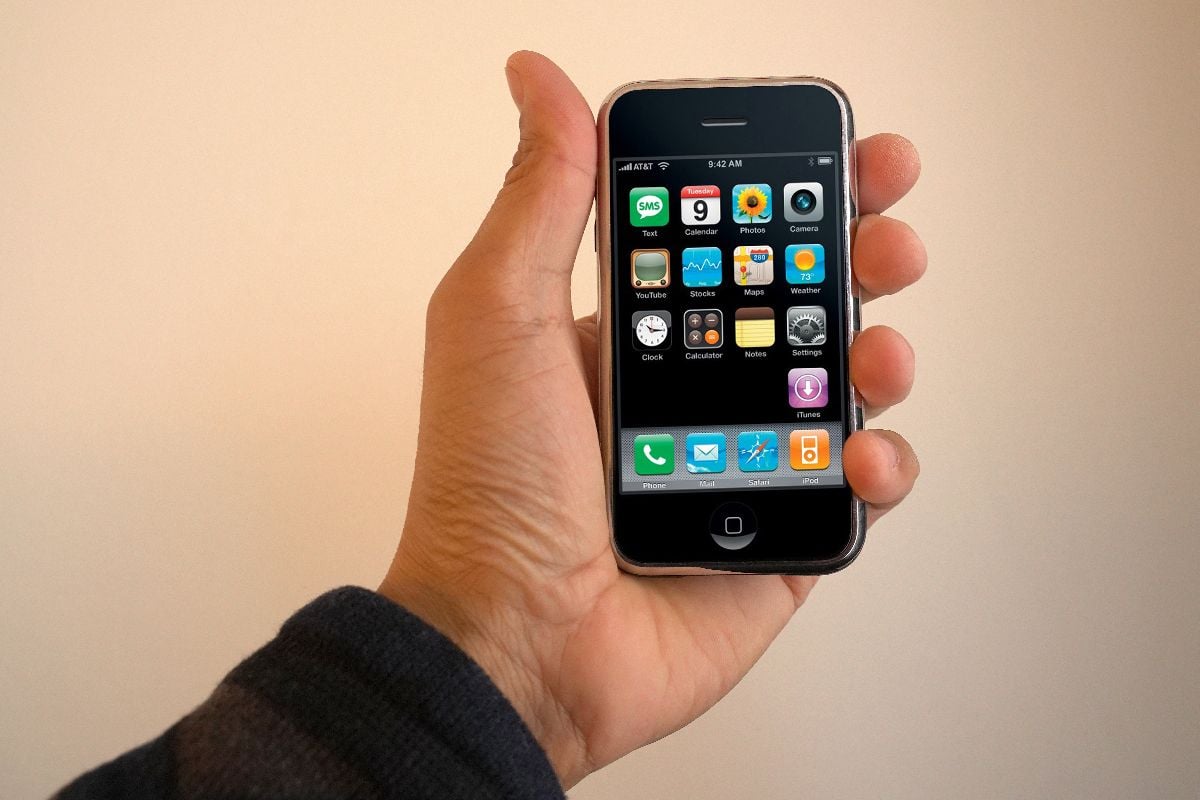
The iPhone, released by Apple in 2007, didn’t just add phone capabilities to existing devices—it created an entirely new category of technology that puts the world’s information in your pocket. This wasn’t innovation; it was revolution disguised as a product launch.
Before the iPhone, phones made calls and maybe sent text messages. After the iPhone, phones became portable computers, cameras, GPS devices, music players, and gateways to all human knowledge. It changed not just technology but human behavior.
The smartphone eliminated the need for dozens of separate devices and created industries that didn’t exist before. App development, mobile photography, ride-sharing, food delivery—entire economic sectors exist because someone in Cupertino reimagined what a phone could be.
11. Electric Vehicles — Tesla Makes Green Look Fast and Cool
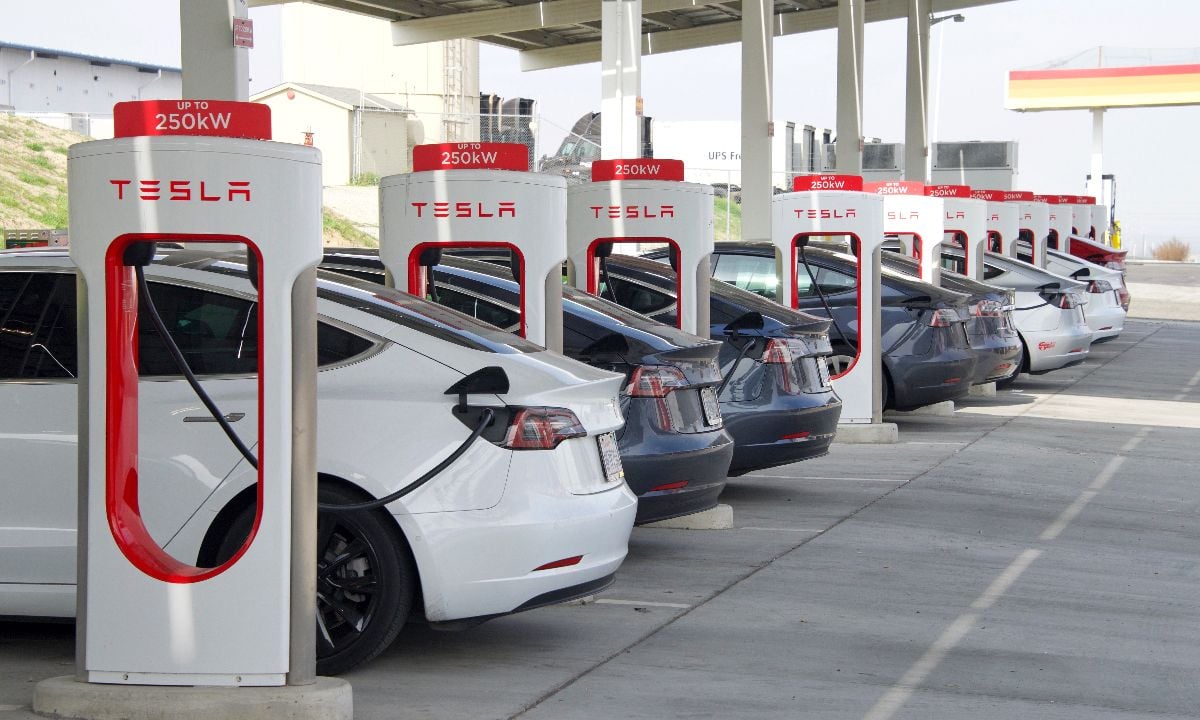
While electric cars existed in the early 1900s, Tesla Motors in Palo Alto made them actually desirable instead of just environmentally responsible. The Tesla Roadster proved that electric vehicles could be fast, sexy, and technologically superior to gasoline cars.
Tesla didn’t just build better electric cars—they made electric vehicles aspirational. Before Tesla, electric cars were golf carts with windshields. After Tesla, electric cars became status symbols that happened to save the planet.
The electric vehicle revolution started in California garages and forced every automaker in the world to completely rethink their business models. Traditional car companies are spending billions trying to catch up to what Tesla figured out first.
10. GPS Technology — Never Getting Lost Again, Courtesy of California

The Global Positioning System was developed by the U.S. military, but the consumer GPS technology that actually works in your phone was largely developed by California companies. The algorithms, chips, and software that make GPS useful came from Silicon Valley.
GPS didn’t just help people navigate—it enabled entirely new industries. Uber, Lyft, DoorDash, Amazon delivery, location-based advertising, and fitness tracking—none of it works without precise location technology.
California companies took military satellite technology and made it so accessible that getting lost became optional. They didn’t just improve navigation—they eliminated one of humanity’s oldest problems.
9. Computer Mouse — Point, Click, and Conquer

Douglas Engelbart invented the computer mouse at Stanford Research Institute in 1964. This wasn’t just a new way to control computers—it was the interface that made personal computing intuitive for regular people.
Before the mouse, computers required memorizing complex commands. After the mouse, computers became visual and intuitive. Point and click didn’t just change computing—it made computing accessible to people who weren’t programmers.
The mouse enabled the graphical user interface, which enabled personal computing, which enabled the entire digital economy. California didn’t just invent a pointing device—they invented intuitive human-computer interaction.
8. Venture Capital Industry — Sand Hill Road’s Billion-Dollar Roulette

While other regions had investors, California created the venture capital model that funds innovation worldwide. Sand Hill Road became the template for turning crazy ideas into billion-dollar companies through systematic risk-taking and mentorship.
Venture capital didn’t just fund companies—it created an entire ecosystem for innovation. The combination of technical talent, investment capital, and risk tolerance in California became the model that every other innovation hub tries to replicate.
This isn’t just about money—it’s about creating institutions that systematically turn ideas into industries. California venture capitalists didn’t just fund the digital revolution; they created the financial infrastructure that made it possible.
7. Hollywood and the Film Industry — Where Dreams Became an Export Business

While movies were invented elsewhere, California created the film industry as we know it. Hollywood didn’t just make movies—it created global entertainment culture and the star system that still dominates media today.
The studio system, special effects, blockbuster marketing, celebrity culture—all invented in California and exported worldwide. Hollywood didn’t just make entertainment; it created the template for how modern media companies operate.
Films and television produced in California shaped global culture more than any other single influence. Fashion, language, values, aspirations—the world learned what it wanted to be by watching California entertainment.
6. Wetsuit — California Armor Turning Cold Oceans Into Playgrounds

Jack O’Neill invented the modern wetsuit in San Francisco in 1952 because he wanted to surf in cold Northern California waters. This wasn’t just sporting equipment—it was technology that made ocean activities possible in climates where they’d been impossible.
Wetsuits didn’t just help surfers—they enabled scientific research, military operations, recreational diving, and marine exploration. California’s desire to surf in cold water led to technology that opened up ocean environments worldwide.
The wetsuit represents California’s approach to innovation: identify something you want to do, figure out why you can’t do it, then invent the technology to make it possible. It’s engineering driven by lifestyle rather than necessity.
5. Pacemaker — Silicon Valley’s Heartbeat Hack

The first implantable pacemaker was created in Sweden in 1958, but the technology that made it dependable and widely available came from California. Silicon Valley engineers and medical device companies applied the same precision that powered semiconductors to medicine, taking a fragile prototype and turning it into a life-saving tool.
California’s role wasn’t in claiming the very first version—it was in perfecting the design, miniaturizing the circuitry, and building the production systems that made pacemakers practical for hospitals everywhere. That blend of medical expertise and electronics engineering could only have happened in a place where hardware innovation was the local dialect.
The ripple effects were enormous. The Valley’s approach to implantable electronics spread far beyond cardiology, inspiring devices like insulin pumps, cochlear implants, and neural stimulators. California didn’t just improve on someone else’s idea—it transformed a single medical breakthrough into an entire field of electronic medicine.
4. Video Game Industry — Pong, Pixels, and a New Media Empire

While early computer games like “Tennis for Two” (1958) and “Spacewar!” (1962) were created elsewhere, the video game industry as commercial entertainment was created in California. Atari, founded in Sunnyvale in 1972, didn’t just make games—they created an entirely new form of media business.
Video games became bigger than movies and music combined, creating industries that didn’t exist before. Game development, esports, streaming, and virtual reality—entire economic sectors exist because California companies decided interactive entertainment could be a business.
Video games didn’t just create entertainment—they changed how humans interact with technology. User interfaces, graphics processing, virtual worlds—gaming technology becomes general technology that transforms everything else.
3. Biotechnology — Engineering Life in South San Francisco

The biotechnology industry was essentially invented in California with the founding of Genentech in South San Francisco in 1976. This wasn’t just a new company—it was a new approach to medicine that treats diseases by engineering biological solutions.
Biotech companies didn’t just make new drugs—they created the foundation for personalized medicine, gene therapy, and treatments for diseases that were previously incurable. Cancer immunotherapy, genetic engineering, and precision medicine all trace back to California innovations.
California didn’t just improve medicine—they created entirely new categories of medical treatment based on understanding and manipulating biological systems. They turned biology into engineering.
2. Startup Culture — Fail Fast, Scale Faster

While entrepreneurship existed everywhere, California created the modern startup culture that treats failure as education and rapid scaling as strategy. The Silicon Valley model of iteration, pivoting, and “move fast and break things” became the global template for innovation.
Startup culture didn’t just change business—it changed how people approach problem-solving. The idea that you can identify problems, build solutions quickly, test them with users, and iterate based on feedback became standard practice far beyond technology.
California exported an entire methodology for innovation that assumes change is constant, failure is temporary, and scale is the ultimate goal. They didn’t just create successful companies—they created the systematic approach to creating successful companies.
1. Integrated Innovation Ecosystem — California’s Greatest Invention Is Itself
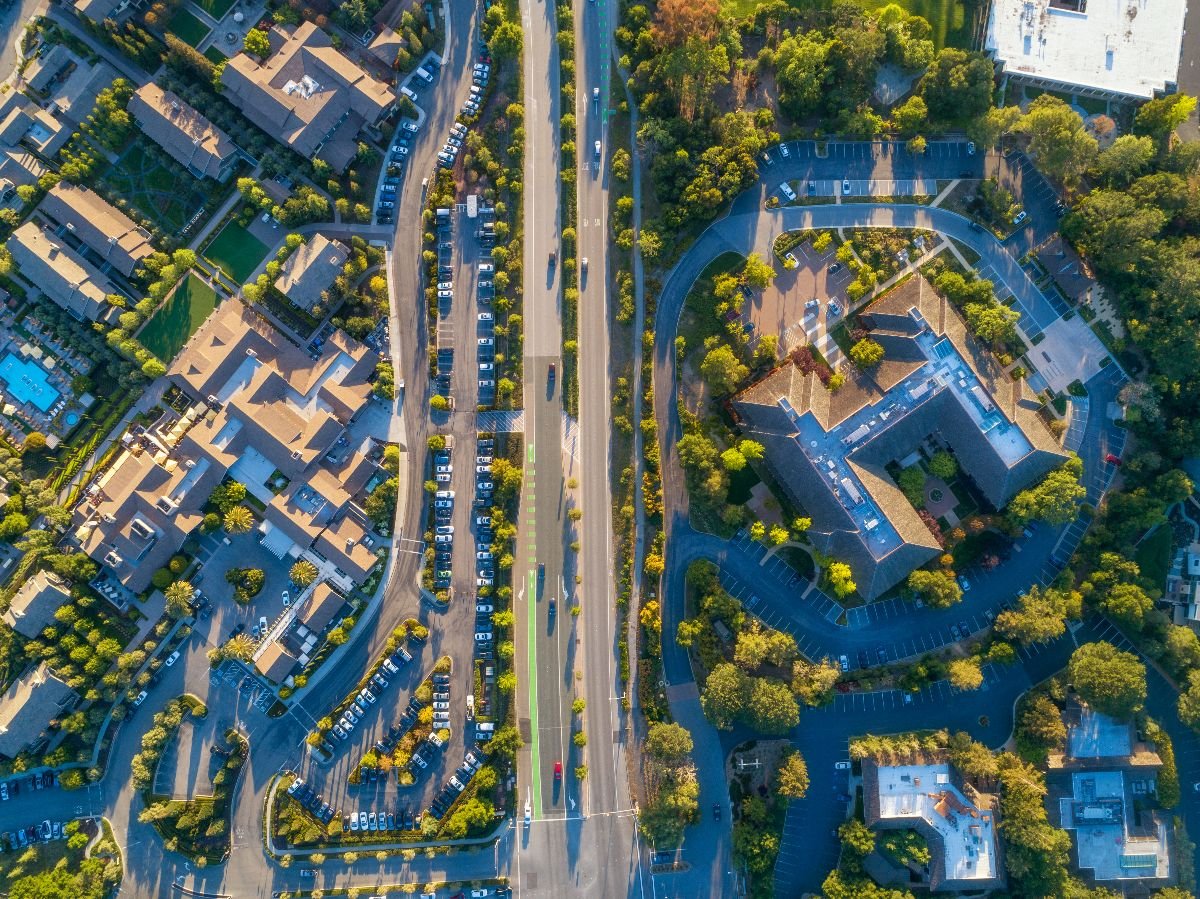
California’s greatest invention isn’t any single technology—it’s the system that produces multiple world-changing innovations simultaneously. The combination of universities, venture capital, technical talent, risk tolerance, and market access creates an innovation machine that no other region has successfully replicated.
This ecosystem didn’t happen by accident. It required decades of building institutions, attracting talent, developing financial systems, and creating cultural norms that reward innovation over stability. California built the infrastructure for systematic innovation.
Other regions have great universities. Other regions have a capital. Other regions have technical talent. But only California created the specific combination that consistently turns ideas into industries that change how humans live. They didn’t just invent technologies—they invented the system that invents technologies.
California’s real innovation is creating an environment where crazy ideas become billion-dollar companies regularly enough that it seems normal. They made innovation systematic, scalable, and repeatable. That’s not just invention—that’s engineering applied to the innovation process itself.






